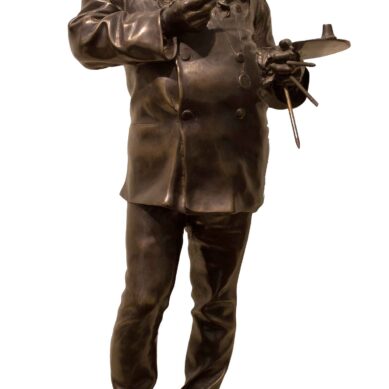You searched
Painter
Ernesto Giroux
Are you interested in the sales or the purchase of his artworks?
We buy works of this artist
and of other painters and sculptors from the 16th century to the first half of the 20th century
The Berardi gallery offers a free and without obligation service for evaluation of ancient and modern art . To find your way in the art market, very complex and full of nuances, it is better to rely on a professional consultant who can answer fast and concretely to your needs. The clarity of the answers will resolve effectively the need to estimate or sell an asset.
Contact us immediately without commitment
Answers also in 24 hours:
Ernesto Giroux
Ernesto Giroux
As is known, the update on Mariano Fortuny’s painting made by Neapolitan painters as early as the 1870s led to the international renewal of their school (Berardi 2001). The first to underline this aspect was Francesco Netti who, on the occasion of the exhibition in Naples in 1877, greeted the Corpus Domini of Francesco Paolo Michetti as representative of the innovation in progress: a preference for light and cold colors, few shadows, colors not mixed but spread with clear tones on the model of Japanese painting, essentially “no other base was allowed than white lead, – another canvas than the immaculate canvas, and the empire of white was founded” (Netti 1980, p. 168).
If in Netti’s eyes Fortuny’s teaching allowed true talents – from Michetti to Giacomo Di Chirico, from Rubens Santoro to Alceste Campriani – to arrive at this innovative light painting, many other art writers harshly criticized the new course. This is not the place to recall the sharp irony used by Adriano Cecioni towards the “copiers of Fortuny”, more useful to report Michele Uda’s disappointment for “pocket art” and the “sketch mania”, dictated by the “profit Goupil ”And from fortunian fashion.
Also in the Naples exhibition of 1877, Uda criticized the proliferating loose and fast technique derived from Fortuny, which, reaching the limits of the sketch, was no longer respectful of the academic rules: “We are at the Pillars of Hercules of the intentionist and impressionist schools gathered: [… ] one step farther you fall into a bucket of paint, and to make a picture you prepare a canvas and throw the palette on it ”(Uda 1900, pp. 73-75).
In essence, the quick workmanship, always accompanied by the brightness of the palette, of the new school led by Michetti was not respectful of good drawing rules and led to the limits of the unfinished: they were not paintings but “intentions” and “impressions” of paintings. In 1877 Uda remembered, alongside Michetti and Di Chirico, the main interpreters of this “impressionist” trend, also Ernesto Giroux, who with his work Consuelo (Naples, Capodimonte Museum) obtained the royal purchase.
Coming from a well-to-do family of French origin but residing in Naples, Giroux, although often moving to Paris, created truly exemplary works based on light painting of Fortune derivation. To Turin in 1878 he sent Estella (Turin, Galleria d’Arte Moderna), painted in acrobatic balance between Michetti and Di Chirico, in 1880 L’Arabo, also declared an iconographic homage to the Spanish master. Finally to the promoter of Naples in 1882 Giroux exhibited the elegant Visit to the ducks.
Daily tranche de vie with a disenchanted tone a la mode which, once again with an agile and self-confident painting of light, makes us think of the possible contacts we had with Giuseppe De Nittis in Paris.





